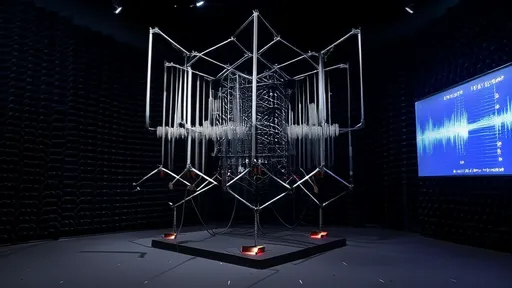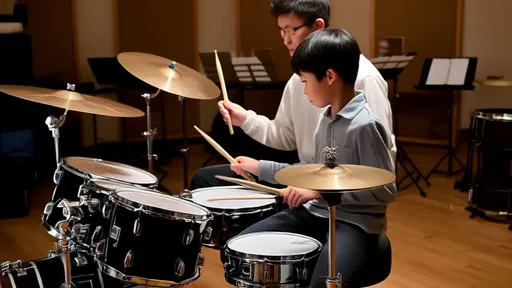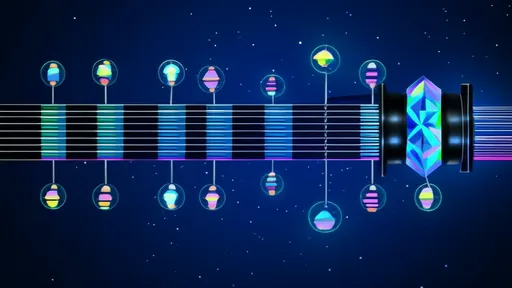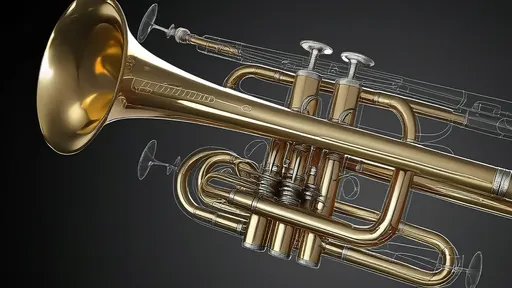The world of musical acoustics holds many fascinating secrets, and among them, the edge tone phenomenon in wind instruments stands as a cornerstone of sound production. This physical principle governs how flutes, recorders, and other woodwinds transform breath into music, creating tones that have captivated humanity for millennia.
At the heart of edge tone generation lies a delicate dance between air and geometry. When a player directs an airstream against a sharp edge (called the labium in flutes or the fipple in recorders), the airflow doesn't simply split in two predictable paths. Instead, it begins to oscillate, alternately flowing inside and outside the instrument in a regular pattern. This oscillation occurs because the initial airflow creates a low-pressure area that pulls the stream in one direction, only for inertia to carry it too far, creating the opposite effect in a continuous cycle.
The physics behind this oscillation reveals surprising complexity. The German physicist Hermann von Helmholtz first systematically studied edge tones in the 19th century, discovering that the oscillation frequency depends primarily on the air jet velocity and the distance to the edge. Modern research shows that the relationship isn't perfectly linear - turbulence, viscosity, and the precise shape of the edge all modify the tone production in subtle ways that instrument makers have learned to exploit through centuries of trial and error.
Different wind instruments employ this mechanism with fascinating variations. In transverse flutes, the player's lips form and direct the airstream across the embouchure hole's far edge. Recorders and whistle-like instruments use a windway to shape the air before it hits the fipple edge. Organ pipes may use either arrangement, with the edge tone exciting the air column within the pipe. Each configuration produces distinct characteristics in terms of playing response, tone color, and dynamic control.
What makes edge-tone instruments particularly remarkable is their self-regulating nature. Unlike reeds that vibrate at their natural frequency, the edge tone synchronizes with the resonances of the air column inside the instrument. When a player changes fingering to select a different note, the edge tone frequency automatically adjusts to match the new resonance frequency of the air column. This feedback system allows for stable notes across the instrument's range while permitting expressive pitch bending when desired.
The interaction between the edge tone and the instrument's air column creates those distinctive woody tones we associate with flutes. The air column acts as a filter, amplifying certain harmonics while suppressing others. Cylindrical pipes (like concert flutes) produce predominantly odd harmonics, giving them their hollow, pure sound. Conical pipes (as in recorders) generate both odd and even harmonics, resulting in richer, more complex timbres. These differences explain why various edge-tone instruments can sound so distinct despite sharing the same basic sound production mechanism.
Modern research continues to uncover new aspects of edge tone physics. High-speed photography and computational fluid dynamics have revealed that the airstream doesn't simply flip from side to side as once thought, but forms complex rolling vortices that interact with the edge. These discoveries help explain why certain playing techniques work and how master players achieve their characteristic sounds. They also guide instrument makers in refining designs for better response and intonation.
The edge tone mechanism's efficiency is nothing short of remarkable. Unlike reed instruments that require significant energy to overcome the reed's stiffness, edge-tone instruments can produce sound with minimal air pressure. This makes them accessible to beginners while allowing advanced players to achieve extraordinary dynamic range and control. The mechanism's sensitivity also enables expressive techniques like vibrato, pitch bends, and multiphonics that give these instruments their vocal quality.
From ancient bone flutes to modern concert instruments, the edge tone principle has remained essentially unchanged because it represents an elegant solution to the challenge of converting steady wind into musical vibration. As acoustic science advances, we gain deeper appreciation for the sophistication hidden within this apparently simple mechanism - a sophistication that master players and makers have intuitively understood and exploited for thousands of years.
Today's instrument designers combine this traditional knowledge with scientific understanding to create instruments with improved playability and tonal range. Meanwhile, performers continue pushing the boundaries of what edge-tone instruments can do, developing extended techniques that produce sounds the original makers never imagined. Yet all these innovations remain grounded in that fundamental interaction between air and edge - a phenomenon that turns breath into art.

By /Jul 25, 2025

By /Jul 25, 2025

By /Jul 25, 2025

By /Jul 25, 2025

By /Jul 25, 2025

By /Jul 25, 2025

By /Jul 25, 2025

By /Jul 25, 2025

By /Jul 25, 2025

By /Jul 25, 2025

By /Jul 25, 2025

By /Jul 25, 2025

By /Jul 25, 2025

By /Jul 25, 2025

By /Jul 25, 2025

By /Jul 25, 2025

By /Jul 25, 2025

By /Jul 25, 2025